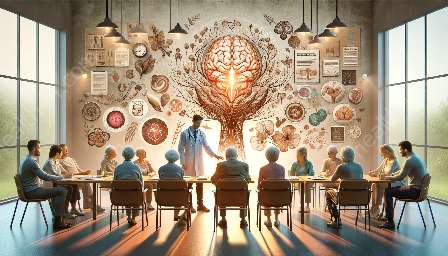As we delve into the fascinating world of neurodegenerative diseases and their impact on a person's health, it's crucial to explore the complexities of Parkinson's disease and associated movement disorders. In this comprehensive guide, we will unravel the causes, symptoms, and treatment options for these conditions, shedding light on how they interplay with general health conditions.
Parkinson's Disease: Unraveling the Mystery
Parkinson's disease is a progressive neurodegenerative disorder that affects movement. It develops gradually, often starting with a barely noticeable tremor in just one hand. But while tremor may be the most well-known sign of Parkinson's disease, the disorder also commonly causes stiffness or slowing of movement.
The main symptoms of Parkinson's disease include tremors, bradykinesia (slowness of movement), rigidity, and postural instability. These symptoms are caused by the death of dopamine-producing neurons in the brain. While the exact cause of this neuron degeneration is unknown, several factors, including genetics and environmental triggers, are believed to play a role.
Causes and Risk Factors
Understanding the causes and risk factors of Parkinson's disease is crucial in developing effective prevention and treatment strategies. Research suggests that a combination of genetic and environmental factors contributes to the development of Parkinson's disease. Age, genetics, and exposure to toxins are among the known risk factors.
- Age: The risk of developing Parkinson's disease increases with age, and the majority of people diagnosed are aged 60 or older.
- Genetics: While most cases of Parkinson's disease are not directly inherited, certain genetic mutations are known to increase the risk of developing the condition.
- Environmental Factors: Exposure to certain toxins or environmental factors, such as pesticides and herbicides, has been linked to an increased risk of Parkinson's disease.
Associated Movement Disorders
Beyond Parkinson's disease, there are several other movement disorders that deserve attention. These disorders may present with symptoms similar to Parkinson's disease but have distinct features that differentiate them.
Essential Tremor: Essential tremor is a common movement disorder, characterized by uncontrollable shaking (tremors) in different parts of the body. Unlike Parkinson's disease, essential tremor is not associated with other serious neurological symptoms.
Dystonia: Dystonia is a movement disorder characterized by sustained or intermittent muscle contractions causing abnormal, often repetitive, movements, postures, or both. The symptoms of dystonia may affect one part of the body or be generalized throughout multiple muscle groups.
Huntington's Disease: Huntington's disease is a genetic disorder that causes the progressive breakdown of nerve cells in the brain. It affects movement, cognition, and behavior, leading to involuntary movements and severe cognitive decline.
Multiple System Atrophy (MSA): MSA is a rare neurodegenerative disorder that impairs the body's involuntary functions, causing symptoms similar to Parkinson's disease, such as tremors, stiffness, and impaired balance and coordination.
Interplay with General Health Conditions
Living with Parkinson's disease or associated movement disorders may present specific challenges for individuals, especially when it comes to managing general health conditions. Chronic conditions like diabetes, cardiovascular diseases, and mental health disorders can significantly impact the overall well-being of individuals with Parkinson's disease and related movement disorders.
It is important to address these interconnections, as managing comorbidities is essential for improving the quality of life of individuals affected by these conditions. Furthermore, understanding the potential interactions between treatments for Parkinson's disease and those for other health conditions can lead to more personalized and effective care plans.
Treatment Options
While there is currently no cure for Parkinson's disease and some associated movement disorders, several treatment options are available to manage symptoms and improve quality of life.
- Medications: Dopamine agonists, monoamine oxidase inhibitors (MAO-B inhibitors), and other medications can help manage symptoms, although their effectiveness may diminish over time.
- Physical Therapy: Physical therapy aims to improve flexibility, balance, and mobility, helping individuals maintain independence in their daily activities.
- Deep Brain Stimulation: This surgical treatment involves implanting a device that delivers electrical stimulation to targeted areas of the brain, effectively reducing motor symptoms.
- Lifestyle Modifications: Regular exercise, a balanced diet, and adequate sleep can all contribute to managing symptoms and overall well-being.
In conclusion, understanding the complexities of Parkinson's disease and associated movement disorders is crucial to providing effective support and personalized care for individuals living with these conditions. By exploring their causes, symptoms, treatment options, and their interplay with general health conditions, we can strive to improve the quality of life for those affected by these neurodegenerative disorders.


